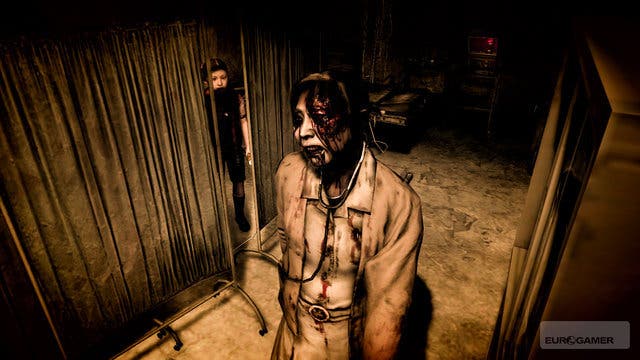Siren: Blood Curse
Some like it clot.
The first two Siren games may have been inspired and joyously original, but fun wasn't the right word for them. The brutality meted out by the 2003 PS2 original, which took the survival-horror template to ferocious extremes, was something to behold, even for hardened veterans of the genre. The result was the most hardcore survival-horror around - not necessarily something to charge your glasses about.
However, if you poked around in there long enough - adapting to the unique gameplay demands of high-jacking your enemies' eyesight, and one of the most complex and interwoven narratives in games - you eventually hit the bones of something very special. It might not have been fun, most of the time, but it was certainly progressive, challenging and engaging. All the elements were there for Siren to take the next step forward for horror gaming. It just needed a sharper focus to make the pieces fit.
The question is whether Siren: Blood Curse - a 12-episode series reboot sold on PSN - can deliver. As Rob Fahey noted when he reviewed the first three episodes (the game is available in three-episode lumps for GBP 6.99 or as a single 12-episode game for GBP 19.99), many of the things that crippled playability in the past have been fixed - or at least tweaked sufficiently to make the game more approachable and enjoyable.
Simple things like movement, camera movement and combat are now less stilted and clunky - and while by no means as refined as they could be, the rough-around-the-edges feel imbues an appropriate balance of panic and control. As you flail makeshift melee weapons and rifles towards lumbering undead, often you'll miss horribly and with dire consequences - and with an unease that's in-keeping with the complete terror of the characters under your control.

Whether this removal of complete control is by accident or design isn't exactly clear. For example, switching from the game's chaotic and disorientating over-the-shoulder 'Type A' camera position to a generally fixed behind-the-player 'Type B' instantly improves your character's stability, but surely this should be consistent across the controls? That lack of consistency speaks volumes about why it has taken until the third iteration of Siren before the jigsaw of good ideas has fallen into place. And even then, sometimes you're still expected you to make the pieces fit using a horrible, almost unusable first-person/aiming mode, and a less-than-brilliant context-sensitive climbing control.
Fortunately, Siren: Blood Curse more than makes up for it elsewhere. Unravelling the mysteries of a 'lost' village was always one of the most appealing aspects of the original, and Sony Japan's rethink of the plot retains much of that allure. Somewhat thrown into an already ongoing story, it gradually becomes evident that some of the cast are there to find out what's going on while others have been taking lessons at the Scooby Doo school of sinister agendas.

In order to appreciate all this, you get to see the story from ten different characters' perspectives, which keeps the gameplay fresh and offers absorbing insights. It's not always clear who are the good guys are, but it's fun - there's that word again - to uncover certain characters' true intentions deep into the game. The skillful way Siren toys with your loyalty and pulls surprises points the way for future attempts at this style of multi-faceted interactive storytelling.
Even if the story doesn't grab you, or you don't enjoy the haplessness of the new American characters, the way you're adapting to a new challenge in bite-sized chunks adds a continual incentive to see what's coming next. Somewhat similar to Alone in the Dark's compelling episodic structure, if you can't get past a particular episode, you can always try the next one (though it's important to point out you can't just skip to the next chapter - just the next episode, which wasn't something AITD allowed you to do). Skipping around the story isn't the best way to take it in, but the game itself makes some provision for this when it does a temporal backflip halfway through, so don't worry too much.








